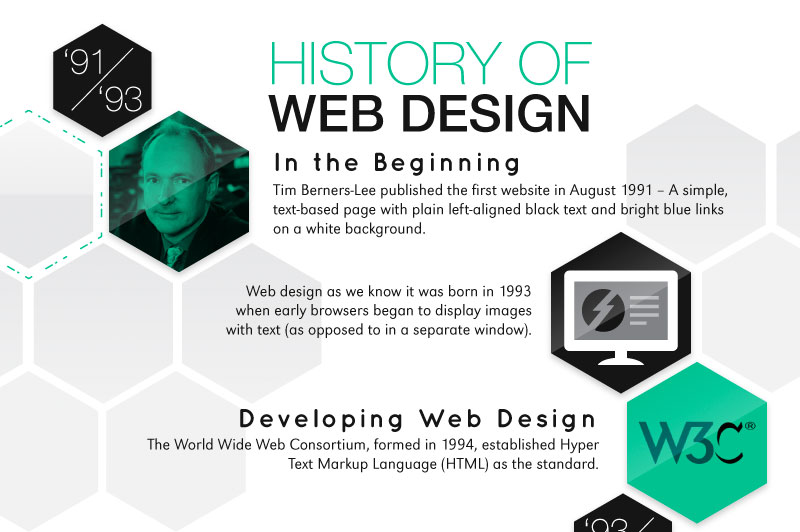Keen To Find Just How Site Style Has Changed In Time? Study The Development From Simpleness To User-Focused Experiences
Keen To Find Just How Site Style Has Changed In Time? Study The Development From Simpleness To User-Focused Experiences
Blog Article
Content Author-Kahn Molina
In the past, web sites were straightforward and focused on information. Navigating was direct, and design was for desktop computers. Now, user experience is essential. Data guides layouts for easy navigating. Receptive layouts fit various devices. Today, dark mode reduces strain, and minimalist menus boost navigating. Interactive features involve individuals, and strong visuals stick out. AI combination enhances engagement. See how design has actually developed to improve your online journey.
Early Days of Website Design
In the early days of web design, simplicity reigned supreme. Websites were fundamental, with restricted shades, typefaces, and formats. The focus was on supplying information as opposed to showy visuals. Customers accessed the web via slow dial-up connections, so speed and capability were key.
Navigation menus were straightforward, typically situated at the top or side of the web page. Internet sites were developed for home computer, as mobile browsing wasn't yet common. Web content was king, and developers prioritized simple readability over intricate design elements.
HTML was the main coding language made use of, and developers had to function within its restrictions. Animations and interactive functions were minimal compared to today's requirements. Web sites were fixed, with little dynamic web content or personalized user experiences.
Increase of User-Focused Layout
With the evolution of site layout, a shift in the direction of user-focused layout principles has actually come to be increasingly popular. Today, producing sites that prioritize individual experience is critical for involving visitors and achieving company goals. User-focused style includes comprehending the demands, choices, and actions of your target audience to customize the site's format, web content, and includes appropriately.
Developers currently conduct detailed research study, such as user studies and usability testing, to gather insights and responses directly from customers. This data-driven strategy helps in creating user-friendly navigating, clear calls-to-action, and visually enticing user interfaces that reverberate with visitors. By placing https://www.searchenginejournal.com/grow-marketing-agency-report-callrail/441673/ at the facility of the style procedure, internet sites can supply a more individualized and pleasurable experience.
Responsive design has also become an essential aspect of user-focused layout, ensuring that internet sites are enhanced for different tools and screen dimensions. This versatility improves ease of access and use, dealing with the diverse ways individuals interact with web sites today. Essentially, the increase of user-focused design indicates a shift towards developing electronic experiences that prioritize the demands and assumptions of the end user.
Modern Trends in Website Design
Discover the latest patterns forming website design today. One prominent fad is dark setting style, providing a streamlined and modern look while lowering eye strain in low-light settings. Another essential pattern is minimal navigating, streamlining food selections and enhancing individual experience by focusing on essential elements. Including micro-interactions, such as animated buttons or scrolling results, can produce an extra interesting and interactive website. Receptive style continues to be essential, making certain smooth user experiences across numerous tools. Additionally, utilizing vibrant typography and asymmetrical formats can add visual rate of interest and draw attention to particular web content.
Incorporating AI innovation, like chatbots for consumer assistance or tailored referrals, boosts individual interaction and streamlines procedures. Ease of access has also become a significant fad, with designers prioritizing comprehensive design practices to deal with diverse user demands. Embracing sustainability by maximizing website performance for rate and effectiveness is one more emerging fad in website design. Teaming up with customer comments and data analytics to iterate and improve style continuously is necessary for remaining pertinent in the ever-evolving digital landscape. By embracing these modern-day trends, you can produce a visually attractive, straightforward website that resonates with your audience.
Recommended Reading
As you reflect on the evolution of site design from the very early days to currently, you can see how user-focused style has ended up being the driving pressure behind contemporary trends.
Embrace the journey of adjustment and adaptation in website design, constantly keeping the customer experience at the forefront.
Remain current with the latest fads and technologies, and never quit advancing your technique to create aesthetically sensational and user-friendly websites.
Develop, adapt, and produce - the future of web design is in your hands.
